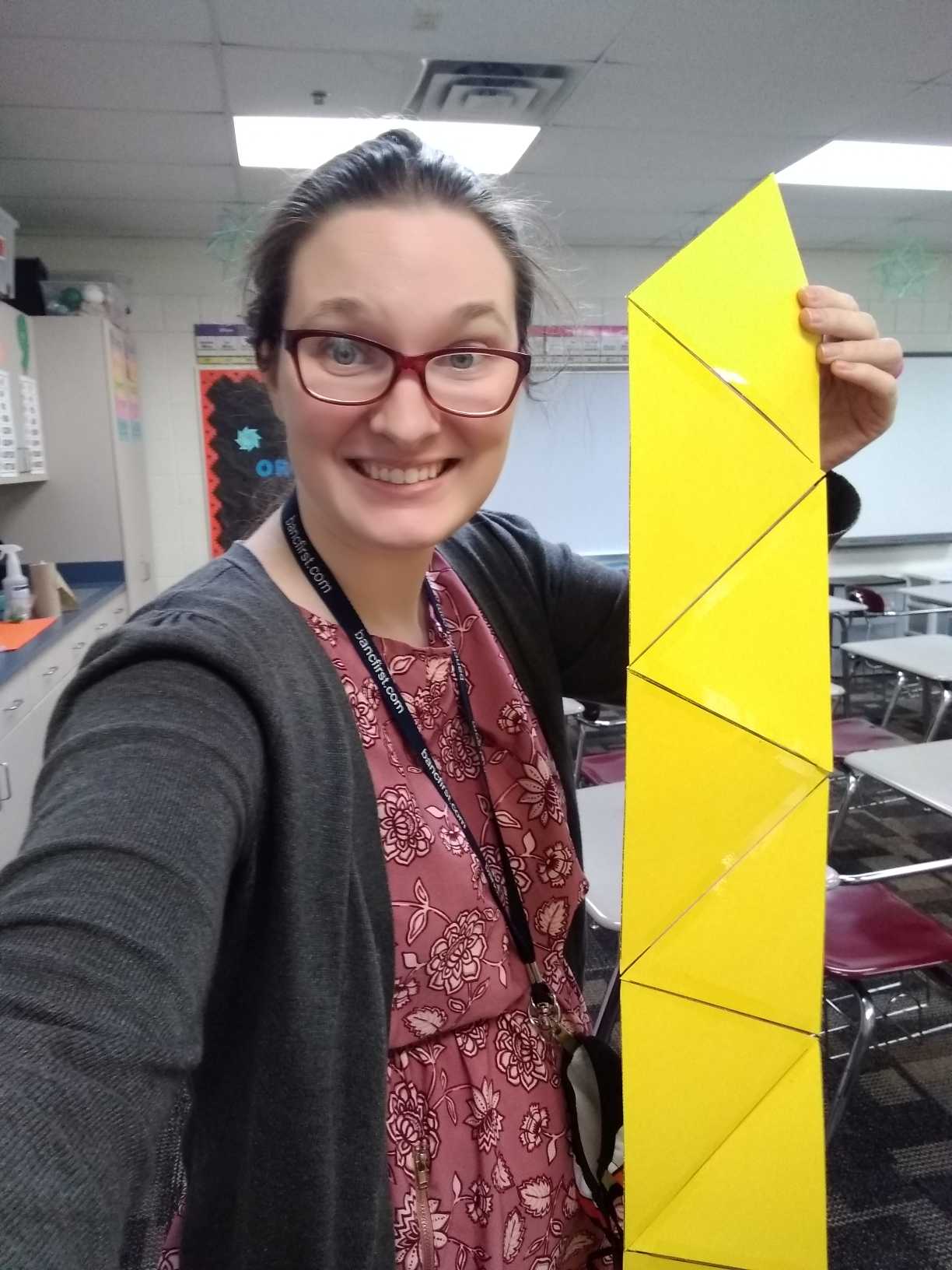Free Printable Hexaflexagon Templates
This blog post contains Amazon affiliate links. As an Amazon Associate, I earn a small commission from qualifying purchases.
Hexaflexagons are one of my favorite fun math projects to do with my students. I want to share my hexaflexagon love with you with some free printable hexaflexagon templates for trihexaflexagons and hexahexaflexagons.

Hexaflexagons – Video Tutorial
I usually introduce students to hexaflexagons by showing Vi Hart’s Hexaflexagons video. If you’ve never seen a hexaflexagon before, you have to watch this video! Trust me, you will be amazed
I like to show Vi Hart’s Hexaflexagon Safety Guide to students after they build their hexaflexagon and learn to flex it but before they color/decorate it. Plus, who wouldn’t want to see a hexaflexagon made out of a tortilla?
Some of my students have commented that her video about how to fold the tortilla hexaflexagon really helped them understand how to fold their paper hexaflexagon.
Hexaflexagon Template for Trihexaflexagon
The standard hexaflexagon is a trihexaflexagon which means it has three different faces.
Then, I pass out blank trihexaflexagon templates from puzzles.com. (The website no longer exists, but I have linked to an archived version of the site. The free templates are still there, but they may take a little more time to load than a normal website. Be patient!)
This website has two versions available. The first template is larger and includes only the template.

The other template is smaller, but it also includes the assembly instructions. I printed off the second template for myself and the first, larger template for my students.

Now, if I was a geometry teacher, I would definitely use the information available in this tutorial
to have my students use a ruler and compass to have students construct their own hexaflexagon templates. How awesome of an introduction to geometric constructions would that be?!
The directions on the second template are well-written, but my students are not the best at following directions. I find it easier to model folding the hexaflexagon for them and having the follow along with the steps. Keep reading to the end of the post to learn how to make a jumbo demonstration hexaflexagon.

Make sure you have your students crease each fold BOTH ways. Otherwise, they will have a lot of trouble flexing their hexaflexagons.
I always let students try to figure out how to work the hexaflexagon on their own. After all, they have seen a video of how it works. But, most students need someone to show them where to pinch and how to open up the center of their hexaflexagon. My favorite thing to do is to watch students’ faces the first time they are able to open up the center of their hexaflexagon. Their expression is PRICELESS. I want to find a way to see that expression more on a day-to-day basis as we are learning algebra.
Hexaflexagon Template for Hexahexaflexagon
Hexahexaflexagons have six faces for students to find. This means they are double the fun!
I usually just teach my students how to make trihexaflexagons since they are the simplest. I leave out a pile of templates for hexahexaflexagons for my super-keen students to grab and do on their own. I always have a few students in each class period who make a hexahexaflexagon. It’s super exciting to see them try to figure out how to find all six sides!
The website also has templates for a hexahexaflexagon.

Celebration of Mind Day
October 21st is Celebration of Mind Day, a holiday that honors Martin Gardner and his contribution to recreational mathematics. It is on October 21st since that was Martin Gardner’s birthday.

I like to show this 2 minute clip I found online of Martin Gardner demonstrating a hexaflexagon. It is from David Suzuki’s 1996 “The Nature of Things” Program.
Often, this date falls close to the day my students come back from Fall Break. I think this is a perfect opportunity to expand my students’ horizons and show them a side of mathematics that they maybe hadn’t seen before.

I always talk about who Martin Gardner was. He did not invent the hexaflexagon, but he did tell the world about it. I first learned about hexaflexagons when I was in the tenth grade. My sister was in the seventh grade at the time, and she got to make one in her math class. I was a tad jealous, and I was also extremely frustrated. I couldn’t figure out how to make it work! And, she made it look so easy.
One of my Statistics students is an amazing artist. This was her creation. I am inspired by it, and I just had to share! Isn’t this just gorgeous? She puts my hexaflexagon to shame.






Giant Demonstration Hexaflexagon
I presented on hexaflexagons at TMC14, and I made a giant hexaflexagon for that presentation.

The equilateral triangles have a side length of 8.5 inches.

Since this is already glued together, I decided to make another demonstration hexaflexagon.

I printed two equilateral triangles (7.5 inch sides) to a sheet of card stock and taped them together. This is just slightly smaller than my assembled one.

Cut out the individual triangles. You will need 10 equilateral triangles.

Tape the pieces together with regular Scotch tape.




I added a Velcro dot that allows me to “glue” my template together and flex it without it coming apart.








1) I absolutely LOVE ViHart.
2) Hexaflexagons are so much fun to make with students. They are truly mesmerized by them
3) Don't be disheartened by the 3rd class. It happens sometimes (usually with the class you least expect it to happen with)!
Maybe the students in the third class were coneheads 🙂
Group dynamic. You need that ONE child who gets excited to rope the rest into the fold. 🙂
Yes, yes, YES!!!